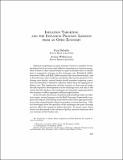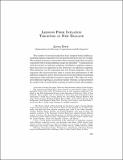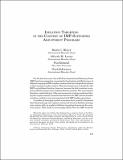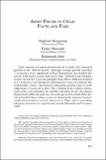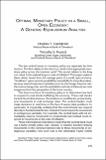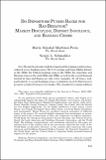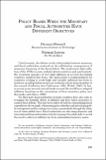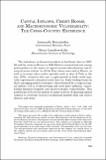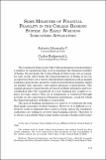Search
Now showing items 41-50 of 323
Inflation targeting and the inflation process: lessons from an open economy
Inflation targeting in an open economy insolves a number of complexities that do not arise with inflation targeting in a clises economy. One of these is that central banks in open economies have to decide how to repond to changes in the exchange rate.
Lessons from inflation targeting in New Zealand
The number of central banks that have adopted formal inflation targeting regimes expanded over the past decade from only one to eight. The number increases even further when central banks that set policy consistent with a formal inflation target are included. Commesurate with the formal or informal ...
Inflation targeting in the context of IMF-Supported adjustment programs
For the last few years, the staff of the Iternational Monetary Fund (IMF) has been engaged in assessing the functioning and effectiveness of inflation targeting in IMF member countries that have adopted this scheme as their monetary policy anchor. This involvement was restricted to the IMF's surveillance ...
Asset prices in Chile: facts and fads
Chile enjoyed an unprecedent period of rapid and sustained growth in the 1986-98 period. Although average growth exceeded 7.1 percent a year, significant cyclical fluctuations also marked the period, both across sectors and across time. Growth in the tradable sectors exceeded 6.7 percent annually from ...
Optimal monetary policy in a small, open economy: a general-equilibrium analysis
The two central issues in monetary policy are separated by time horizon. The first relates to the short run: what is the appropriate monetary policy across the business cycle? The second relates to the long run: waht is the optimal long-run rate of inflation? This paper explores these classic issues ...
Do depositors punish banks for bad behavior? market discipline, deposit insurance, and banking crises
Over the last two decades, both developed and developing countries have endured severe banking crises. The U.S. savings and loans (S&Ls) debacle in the 1980s, the chilean banking crisis in the 1980s, the Argentine and Mexsican crises in the mid-1980s and 1990s, as well as the recent financial turmoil ...
Policy biases when the monetary and fiscal authorities have different objectives
Until recently, the debate on the relationship between monetary and fiscal authorities centered on the inflationary consequences of mentary financing of the fiscal deficit. The moderately high inflation of the 1970s in some industrialized countries and, particularly, the recurring episodes of very ...
Capital inflows, credit booms, and macroeconomic vulnerability: the cross-country experience
The turbulence in financial markets is Southeast Asia in 1997-98 and the crisis in Mexico in 1994-95 have renewed interest among policymarkers in the issues of capital account liberalization and financial sector reform. In all the East Asian cases and in Mexico, as well as in many other earlier episodes ...
Some measures of financial fragility in the chilean banking system: an early warning indicators application
The regulatory framework of the chilean financial system includes a number of regulations that seek to maintain the financial stability of banks. On one hand, the Central Bank of Chile in its role as regulator and, on the other hand, the Superintendency of Banks in its role as supervisor have set a ...
The international financial system after Covid-19
In March of 2020, international markets seized up with a violence unequaled since the Global Financial Crisis (GFC) nearly a dozen
years before. As economies around the world locked down in the face of the potentially deadly but completely novel SARS-CoV-2 virus, stock markets fell, firms and governments ...

